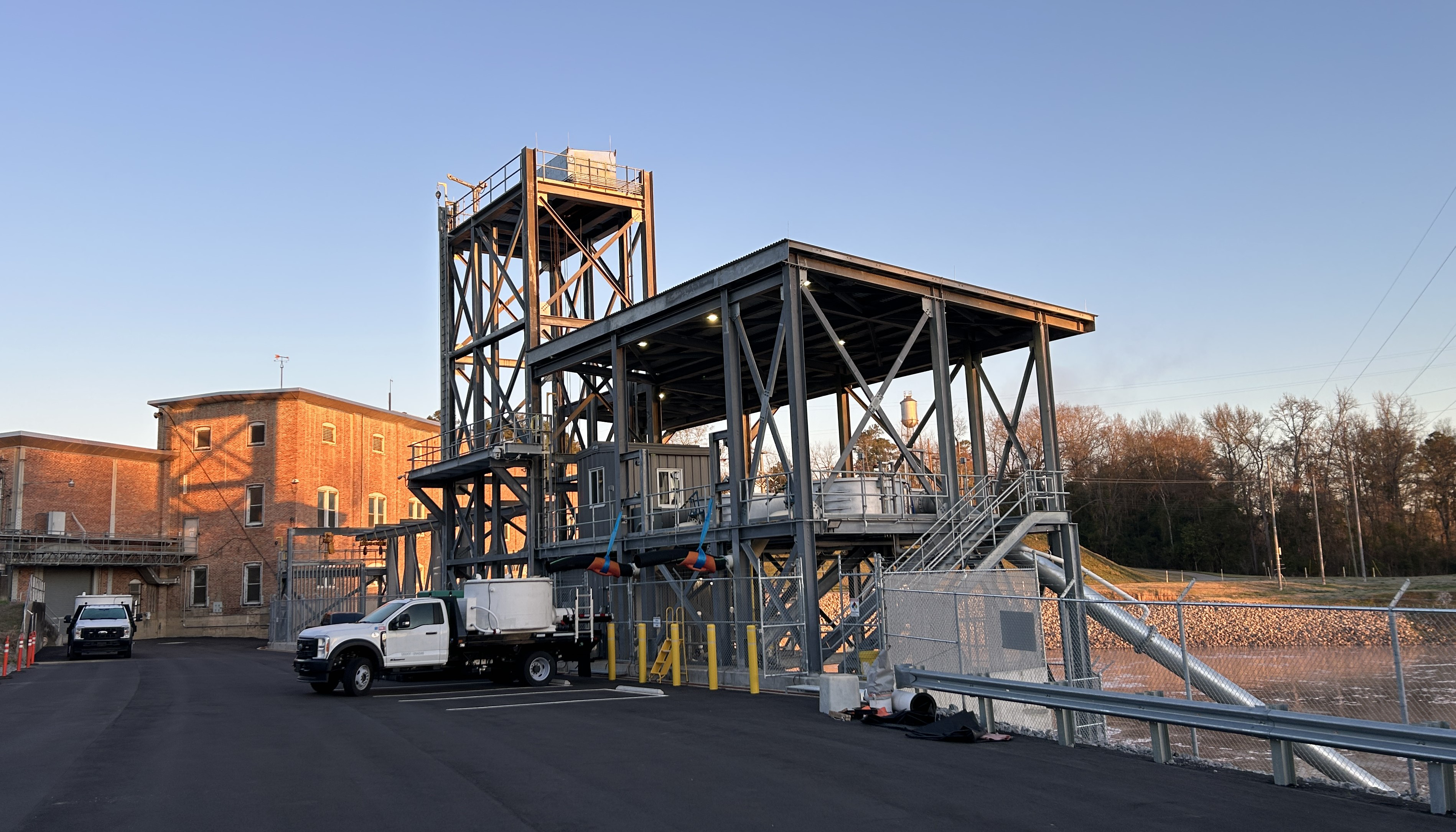Our client required upstream and downstream fish passage design services for a hydro station along the Yadkin-Pee Dee River to facilitate migration of American shad and American eel as part of their Federal Energy Regulatory Commission (FERC) license compliance.
Kleinschmidt performed a review of alternative approaches for both upstream and downstream fish passage at the site. Kleinschmidt then prepared conceptual design drawings for the preferred alternatives and assisted the client in consultation with the stakeholder group to gain regulatory approval for both the upstream and downstream fish passage concepts. The preferred alternative for downstream passage of American Shad used an Obermeyer crest gate system installed in an approximate 8-foot deep by 42-foot wide slot in the existing spillway, with a floating fish guidance boom in the headpond to direct fish to the new crest gate system. The preferred alternative for upstream passage of American shad is a fish lift with a gravity fed attraction water system which will supply water from the abandoned exciter bay. The fish lift was designed to be constructed in two phases. The first phase (complete in 2024) lifts fish to a sorting tank on a raised platform where the fish are sorted and moved to holding tanks to await transport via truck above the dam. The second phase will be a future addition to the fish lift system and will extend the height of the fish lift and provide a flume/chute/pipe for volitional passage into the headpond. The preferred alternative for upstream passage of American eel utilized a historical abandoned fish ladder and a new eel ladder with a collection tank and exit pipe system to allow volitional passage of eel into the headpond.
Kleinschmidt developed the final designs for the proposed fish passage systems along with supporting FERC documentation. Kleinschmidt provided full-time on-site construction support throughout construction, along with commissioning and operator training once construction was complete, and is currently providing on-site support during the first seasons of fish passage operations.
Kleinschmidt’s downstream fish passage system design includes four crest gates with varying sizes to accommodate a wide range of attraction water flows and head pond elevations that were incorporated into the Obermeyer crest gate system that was already planned for the spillway, reducing overall project costs. Our experience designing more than 20 fish lifts enabled use of previous design components leading to a more efficient design process. Kleinschmidt’s team of engineers were able to provide full-time on-site support for over a 5-year construction period and have successfully trained the Owner on use of their new fish passage facilities.

Regional Vice President
Steve Layman, Ph.D.
“I really enjoy the energy and collaborative spirit for sound science and creative solutions that protect the environment here at Kleinschmidt.” Steven Layman has over 35 years of hydropower-specific experience and is Kleinschmidt’s Southeast Region Vice President. Steve is a senior aquatic ecologist and fisheries biologist who specializes in leading ecological assessments and managing project...


